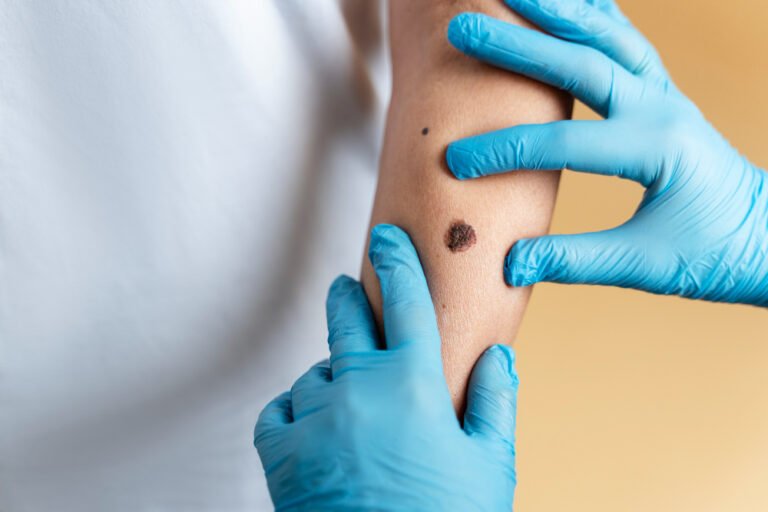
What is the Wart Removal?
According to the professional Warts are small, enlarged structures on the skin given by a viral infection. Wart removal is the method used to get treatment of warts/moles. Although they can grow everywhere on the body, warts are generally appear on the hands, feet, and face.
Different Types of Warts Found on the Body
These small lumps that can appear on your skin are called warts. They have been produced by a virus and may be smooth or rough. Differnet types are there:
1. Common Warts
These are the most common type of wart that appears on your hands or fingers. They can feel rough can include minimal black spots.
2. Plantar Warts
Plantar Warts appear on the bottom of your feet. Because of the pressure, they may experience pain while running.
3. Flat Warts
Flat warts are flat and softer, and they typically appear in large clusters on your face, neck, or arms. It may be pink, brown, or yellow.
4. Fillform Warts
Filiform warts like small threads that usually appear around the lips, nose, or eyes.
5. Periungual Warts
They can be appear inside below the fingertips or fingernails & toenails and can make your nails appear an odd.
6. Genital Warts
Genital warts are a type of warts that can appear on your personal regions. They are caused by a virus that may be acquired through relationship.
Causes of Wart
There are some many causes of wart so let’s explain:
1. Viral Infection
Warts develop by the virus known as the human papillomavirus(HPV). There are several forms of HPV and a few of them may cause warts on the skin by infecting the top layer.
2. Direct Contact
Warts are harmful it can be transferred from person to person by having direct contact with the wart or anything that have touched it. It may happen through steps such as handshakes, exchanging towels or shaving blades.
3. Breaks in the Skin
The human HPV virus can enter in the skin through small infections, scratches, or breaks on the surface. Hydrated, warm skin is particularly susceptible to infection, that’s the reason warts are common on the hands, feet, and reproductive area.
4. Affected immune system
Patients having weak immune systems, such as those suffering from specific diseases and after treatments such as chemotherapy is more probable to get warts because the immune system may be not able to fight the virus as successfully.
5. Genetics
Some people may be naturally susceptible to getting warts more quickly than others. A family record of warts, as well as sensitivity to viral infections, might increase the probability of getting them.
How Doctor's can remove the Wart
Doctors can use a number of methods to remove the warts, depending on their size, location, and kind. Here are some popular methods that experts use to remove the warts.
1. Topical Treatments
Doctor’s can suggest harmful substances that can be applied immediately to the wart. This methods is used to frequently include chemicals such as salicylic acid, which works by slowly dissolving down the wart tissue.
2. Cryotherapy
During this procedure, the doctor freeze the wart with the help of liquid nitrogen. Freezing enables the wart to blister and finally fall off. Cryotherapy is a common and effective treatment for warts, although it can require multiple treatments.
3. Electrosurgery
Electrosurgery treatment involves the doctor using a little electrical current to heat out the wart. To reduce pain, this procedure is usually performed using a local anesthetic.
4. Surgical Removal
More complex or more resistant warts may require surgical removal. The doctor will provide a local anesthetic before removing the wart with a knife or other surgical tool.
5. Laser therapy
Laser therapy involves using focused beams of light to damage the blood vessels which nourish the wart, which causes the wart to shrink and finally fall out. This procedure is commonly used for warts that are difficult to treat using traditional methods.
Treatment options are affected on several factors including the needs of the individual patients, the healthcare professional’s experience, and the kind and location of the wart. Consulting with a medical expert is essential if you want to determine what kind of action is best for your specific situation.
